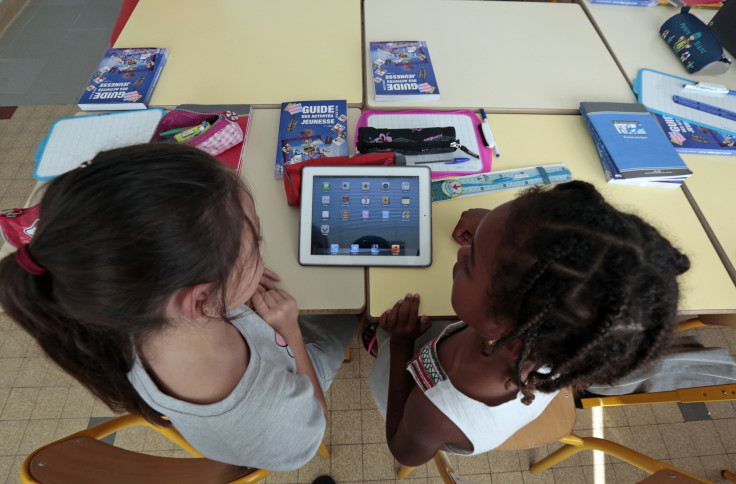Kindergartners Who Share iPads Perform Better In School, Study Suggests

A recent study suggests that sharing of iPads among kindergarten students provides more satisfactory school performance than by giving one iPad for each child. The researchers had this conclusion after a year-long investigation conducted in three different schools in a Midwestern school district.
The study involved 350 students, who were divided into three groups. The students in the first school were given one iPad each, the second group had one iPad for every pair of students and the third school was not given iPads at all. This then placed the students in a traditional classroom setup, only now with an iPad as an additional educational tool. The same applications for math and literacy subjects were installed in the iPads.
An achievement test was then facilitated by the researchers at the end of the school year to find out how the three group of students fared academically. The researchers found that the students who shared iPads scored approximately 30 points higher compared to those who were not given iPads and those who were provided with one iPad each. Additionally, the same group of students showed more improvement in other academic activities outside of the school, such as homework.
No other notable factors were said to affect the study, aside from the iPads given. The children had the same classroom setup, trained in the same student-teacher ratio and under the same demographic circumstances. This then further amplifies the possibility that iPads may have been the reason for the improved examination ratings, the research team said.
"I went in thinking one-to-one would have been better than shared iPads," comments researcher Courtney Blackwell, a doctoral student at Northwestern University's Center on Media and Human Development. "I think when they had to share the iPads it was encouraging those social interactions. There was more talk about what they were doing on the iPads," Blackwell answered when asked why such improved results came out from the group who shared iPads. The research group assumed that there were other forms of social interaction in the classroom in the other two groups, but the researchers said that it is the combination of social interaction and technology that forced the final test results.
As some schools have started providing iPads to individual students, Blackwell recommends these institutions to review how such devices are utilised. He adds that schools should consider more group activities involving the iPad rather than having a child deal with it alone. This is also a practical method to try as tablet implementations in schools may be very costly and evidence pertaining to the benefits of individual iPad use is still lacking, the researchers said.
The study, which will be presented in the 65th Annual Conference of the International Communication Association in San Juan, Puerto Rico, concludes that while the scope of the investigation was limited to just three schools, the findings can still serve as a valuable factor in the recent efforts of academic institutions to implement the use of iPads in the classroom. The Los Angeles Unified School District initially projected to spend about $1.3 billion to provide one iPad for each student.
To contact the writer, email rinadoctor00@gmail.com





















